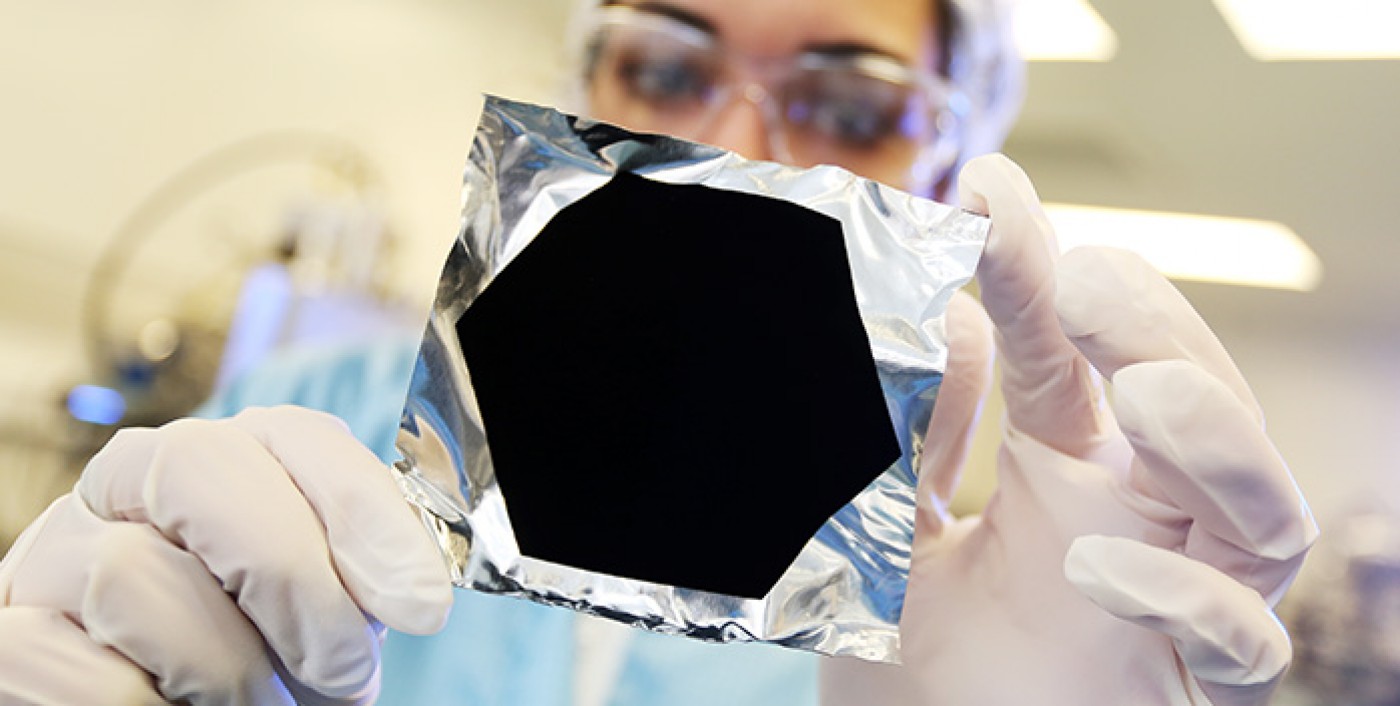World's Blackest Material Now Comes in a Spray Can

Though it may look like a 2D cartoon wormhole, "Vantablack" is the blackest material known to science.
Vantablack was first created by researchers in 2014, and was found to be the world's darkest material — capable of absorbing 99.96 percent of ultraviolet, visible and infrared light. The material is not a paint, pigment or fabric, but a special coating designed to achieve a near total lack of reflectance, according to Surrey NanoSystems, the company that produces Vantablack.
Since its initial development, researchers have increased the material's blackness. In 2016, the research team announced on YouTube that an updated version of the material was so black no spectrometer was able to measure how much light Vantablack absorbs — meaning it the first material material so 'black' that it can't be measured, according to the researchers. [10 Technologies That Will Transform Your Life]
Now, a variation of Vantablack (known as Vantablack S-VIS) is available in a spray-on form that blocks 99.8 percent of ultraviolet, visible and infrared light — enough to make an otherwise detailed 3D object appear as a flat black void.
"If you see [Vantablack S-VIS] on a flat surface on its own, with no other black material to reference it against, it just looks like a black velvet surface," Ben Jensen, chief technical officer for Surrey NanoSystems, recently told the Australian Broadcasting Corp. (ABC). "If you see it on a 3D object, like crinkled foil, the coated side still looks like a black two-dimensional flat surface. It's only when you turn it around and you realize that it's got a lot of dimensionality, that you grasp how different it is."
Vantablack achieves its supreme blackness through millions of carbon nanotubes. Each nanotube of the coating is around 20 nanometers in diameter (about 3,500 times smaller than the width of a human hair) and around 14 microns to 50 microns long, according to Surrey NanoSystems. This amounts to about 1 billion nanotubes on a surface area of 0.1 inches square (1 centimeter square).
When light hits this nanotube "forest," it enters the microscopic spaces amid the tubes and is rapidly absorbed as it bounces between them. The almost perfectly black, light-void surface is created because of the material's near-total lack of reflectance.
Sign up for the Live Science daily newsletter now
Get the world’s most fascinating discoveries delivered straight to your inbox.
"To understand this effect, try to visualize walking through a forest in which the trees are around 3 km [1.86 miles] tall instead of the usual 10 to 20 meters [33 to 66 feet]," Surrey NanoSystems researchers explained on the company's website. "It’s easy to imagine just how little light, if any, would reach you."
According to the researchers, Vantablack's ability to absorb light could increase performance of infrared cameras and sensors, benefit scientific instruments and eventually provide "a unique aesthetic" to luxury products. The material's delicate nanotube structure — which is mostly empty space — can't be touched without disrupting the coating's effect, so current applications are limited.
The coating has made its way into space, however ― where it can be used without being disturbed — on a satellite. ABC reports that Vantablack was used on a European microsatellite that launched in December 2015, as a coating on the satellite's star tracker, a device that measures the positions of stars.
"You can imagine up in space people think of it as being really black and dark, but actually it's incredibly bright up there because the sun's like a huge arc lamp and you've got light reflecting off the Earth and moon. So, the stars are really quite faint," Jensen told ABC. "This material's helping those star-tracker cameras to improve performance and reduce the mass on the satellite, which is really important."
Though Vantablack is not commercially available, Surrey NanoSystems has licensed the product and is pursuing multiple new applications, ranging from science to art. Universities, museums and similar research institutions can also request a sample of Vantablack — "a sealed 'crinkled foil' display unit," according to Surrey NanoSystems.
Original article on Live Science.












